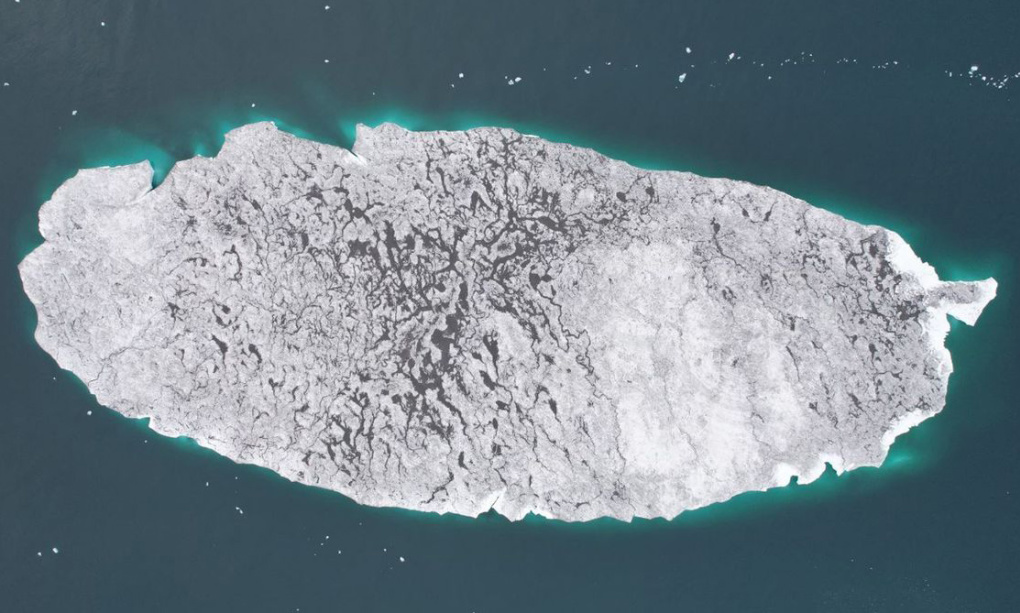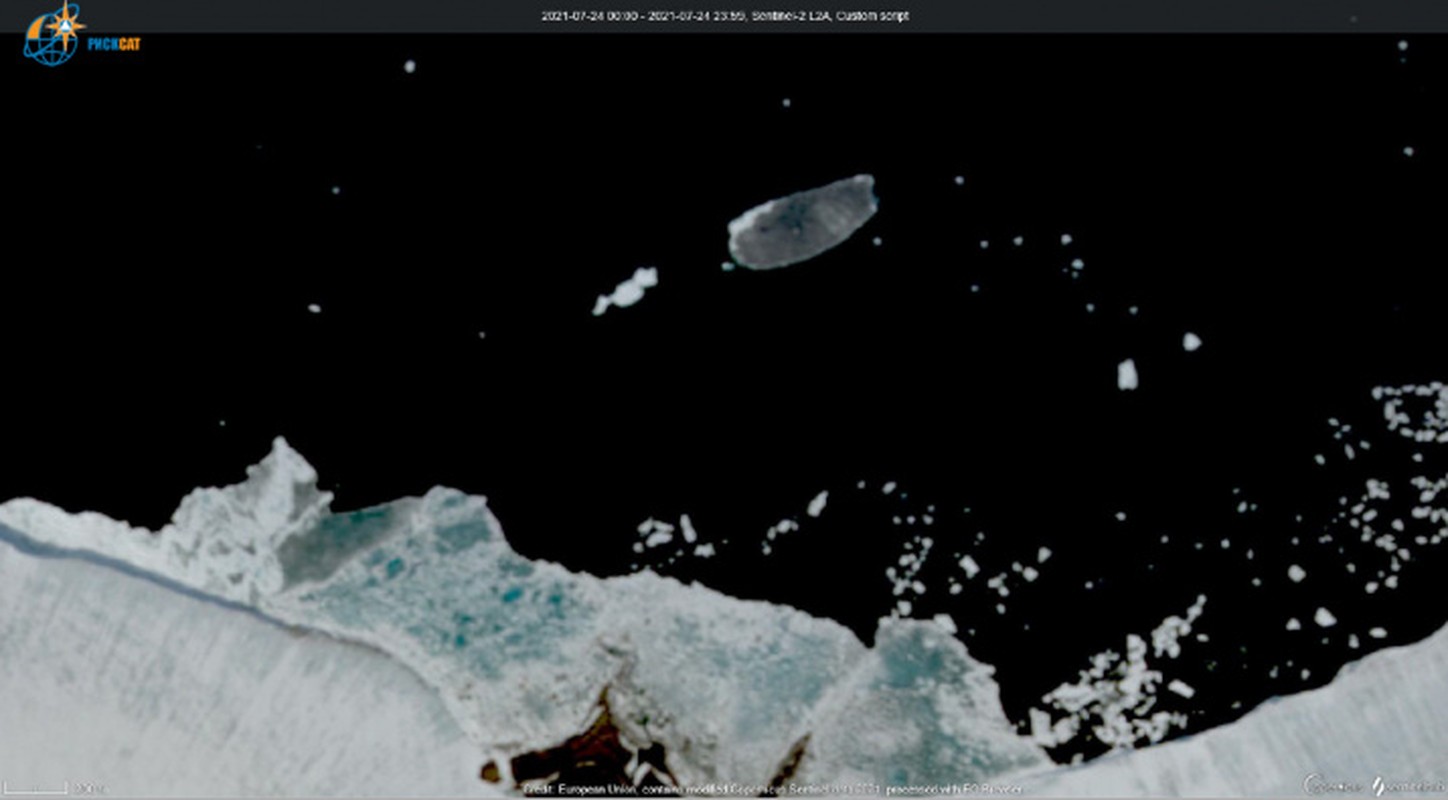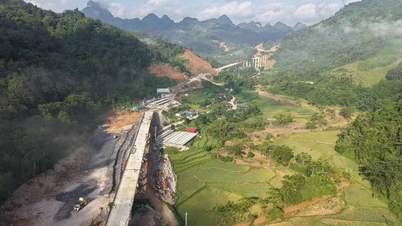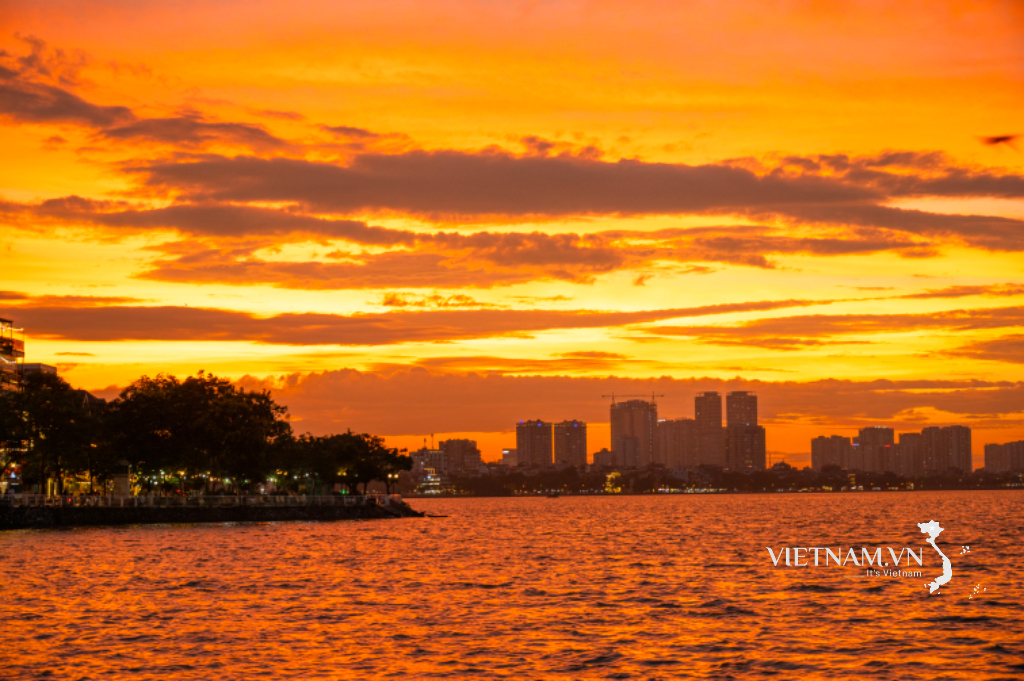What terrible thing happened to this island?
A group of high school and college students realized that Russia's Mesyatsev Island in the Arctic no longer exists when they compared satellite images for the Moscow Aviation Institute's RISKSAT project, Live Science reported on November 8.
Russia's Arctic Island Completely Disappears
Mesyatsev Island, a mass of ice and dust, was once connected as an ice cap to the larger Eva-Liv Island and is part of Russia’s Franz Josef Land archipelago, which includes about 190 islands in the Arctic Ocean. It likely existed as a separate entity before 1985, according to a 2019 paper published in the journal Geosciences.
In 2010, the surface area of Mesyatsev Island was about 1.1 million square meters, equivalent to the size of about 20 American football fields.

The surface area of Mesyatsev Island is about 1.1 million square meters. (Photo: RGO)
Mesyatsev Island has been melting since it broke away from Eva-Liv, and the process has accelerated in the last 10 years. In 2015, the island's area was only about 530,000 square meters, less than half the size it was in 2010.
By 2022, the island had shrunk so much that scientists stopped tracking it, predicting it wouldn’t last long. So it was a surprise to the students when they discovered it was still visible in satellite images in August of this year.
Scientists are still unsure why Mesyatsev Island has survived longer than expected. One theory is that the dust on the island’s surface may have been washed away by waves or rain, slowing its melting. In 2021, the dust made the island darker, absorbing more solar radiation. It’s possible the dust was blown to the island from elsewhere or formed from melting ice.

By September 3, newer images showed that Mesyatsev Island had completely disappeared. (Photo: GRO)
Associate Professor, Doctor of Technical Sciences Alexey Kucheiko and his team have been monitoring the ice loss in the Franz Josef archipelago since 2020 using satellite images. They discovered that a 53-hectare ice sheet on Mesyatsev Island has completely disappeared, leaving a blank space on the map of the Arctic region. The team has been warning about this loss since 2020, and now it is necessary to update nautical charts for the region to reflect the change.
Since 2020, a team of experts led by Associate Professor, Doctor of Technical Sciences Alexey Kucheiko has been observing the ice melting process in the Franz Josef archipelago using satellite images. They realized that a 53-hectare ice block on Mesyatsev Island no longer appears on the Arctic map, a change that has been warned since 2020. Therefore, navigation maps for ships in this area need to be updated to reflect this change.
As of August 19, 2015, Mesyatsev Island still had an area of 53 hectares. But through satellite observations on August 12, 2024, the island's area was only 3 hectares. After only one month, on September 13, 2024, Mesyatsev Island no longer appeared on satellite images and had completely disappeared, marking the end of this ice area in the Arctic.

Mesyatsev Island has been melting since it separated from Eva-Liv Island, but the rate of melting has increased over the past decade. (Photo: RGO)
According to calculations, the Mesyatsev Ice Island is melting at a rate of 5 to 13 hectares per year. The island, before its disappearance, was located near Big Eva-Liv - one of the northernmost islands of the archipelago.
The team explained that the main cause of Mesyatsev Island's disappearance is global warming in the Arctic. The increase in temperature has caused glaciers to melt and sea levels to rise, causing erosion and loss of icy terrain.
Alexey Kucheiko, a researcher at the Moscow Aviation Institute, confirmed that the island had completely melted.
The team of experts also affirmed that they will continue research to confirm the complete disappearance of Mesyatsev Island and to assess possible changes in the future.
Hai Xia (Summary)
Source: https://giadinh.suckhoedoisong.vn/hon-dao-voi-kich-thuoc-20-san-bong-bau-duc-bien-mat-khoi-ban-do-chuyen-gia-noi-no-da-hoan-toan-tan-chay-172241119072946195.htm



![[Photo] Prime Minister Pham Minh Chinh attends a conference to review one year of deploying forces to participate in protecting security and order at the grassroots level.](https://vphoto.vietnam.vn/thumb/1200x675/vietnam/resource/IMAGE/2025/11/12/1762957553775_dsc-2379-jpg.webp)

![[Photo] Highways passing through Dong Nai](https://vphoto.vietnam.vn/thumb/1200x675/vietnam/resource/IMAGE/2025/11/12/1762940149627_ndo_br_1-resize-5756-jpg.webp)



























































































![Dong Nai OCOP transition: [Article 3] Linking tourism with OCOP product consumption](https://vphoto.vietnam.vn/thumb/402x226/vietnam/resource/IMAGE/2025/11/10/1762739199309_1324-2740-7_n-162543_981.jpeg)







Comment (0)